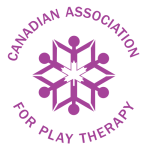
Non-Directive Play Therapy RETIRED BUT MAY OCCUR AGAIN IN 2020
Non-Directive Play Therapy is the most prominent model of play therapy. Child-centered play therapy was developed by Virginia Axline based on the principles Client-Centered Therapy by Carl Rogers. Its premise is that if a therapist creates a safe therapeutic environment a child will initiate the therapeutic work they need to do to resolve presenting issues. It is an evidence-based therapeutic intervention for children ages 3- 12 and older. Participants in this workshop after returning to their office will be able to competently and confidently conduct CCPT with their clients.
Play is a child’s natural medium of communication, symbolic language. Play serves important child developmental purposes including motor, social, emotional, intellectual and mastery. Play represents the child’s attempt to organize and integrate their experiences and internal world. It is by expressing, through play – the process of externalizing the images and symbols from the inner world, through a creative medium that is witnessed in sensory form and honoured by a skilled and trained therapist who is fully present – that a deeper level of growth and healing occur. Child-Centered Play Therapy is an empirically supported approach that helps children express feelings, heal trauma, develop emotional regulation and problem-solving skills, and enhance self- esteem.
Learning Outcomes:
Participants will be able to:
-
understand language as images in a child’s play;
-
understand the role of play in child development;
-
identify Virginia Axline’s principles of child-centered play therapy;
-
identify the goals, stages, and intake, assessment and treatment process;
-
confidently and effectively recommend child-centered play therapy to parents as
the most appropriate therapeutic intervention;
-
demonstrate child- centered play therapy skills with competence and confidence;
-
describe appropriate playroom setup and toy selection and rationale;
-
identify themes of play sessions and the process of understanding the meaning of play therapy sequences;
